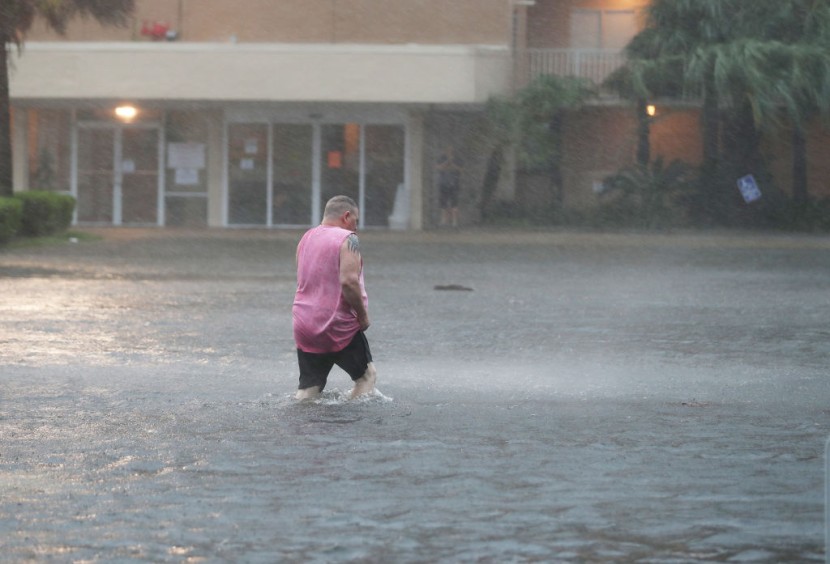
One of the strongest hurricanes ever recorded in the US, Hurricane Ian, blasted ashore in southwest Florida on Wednesday. It cut electricity to 2.25 million people and turned streets into rivers.
From Englewood to Bonita Beach in the southwest, destructive waves battered the coastline, including Charlotte Harbor in Punta Gorda, which is north of Fort Myers.
Florida Loses Power as Hurricane Ian Moves Inland
In addition to coastal surges, Hurricane Ian is forecast to bring 12 to 18 inches of rain as it makes its way slowly across Florida over the next 24 hours. A sheriff's office on the coast said it received reports from people stranded in flooded homes.
My boyfriend saving a cat from flood waters near Bonita Beach. #HurricaneIan #Naples #Bonita #FortMyers pic.twitter.com/BlBC9P1rdy
— Megan Cruz Scavo (@MeganScavo) September 28, 2022
On social media, a number of residents begged for assistance by posting videos of debris-covered water rushing toward their homes. A doctor who works there said that the storm surge in Port Charlotte overwhelmed a lower-level emergency room and that the fourth-floor critical care unit's roof was partially torn off by high winds.
We were in the eye wall of Cat. 4 #Hurricane #Ian for over 5 hours and the back side was the worst.
— Mike Seidel (@mikeseidel) September 29, 2022
I haven't experienced anything close to this in over 30 years @weatherchannel pic.twitter.com/wfEqcuEBAm
Ron DeSantis, the governor of Florida, recommended residents to stay inside and that the upcoming few days will be awful, according to Independent. The storm's peak wind speeds came close to putting it in the most severe category, Category 5, on the Saffir-Simpson scale, which is reserved for storms with maximum sustained winds of at least 157 mph.
Since the beginning of the storm, there have been more than 2 million power outages in the state, and curfews have been implemented. DeSantis claimed that Ian had caused life-threatening storm surges, which in some spots reached heights of up to 12 feet and sent waves of wind-driven saltwater spilling along the coast.
To give people an idea of how horrible Hurricane Ian is in Bonita Springs and the second wall of the hurricane hasn’t hit yet. pic.twitter.com/PvpGuv9QYL
— Not Lacy. (@Laceybnai) September 28, 2022
Videos shared on social media and local TV stations an hour after landfall showed water fueled by a storm surge flowing through many neighborhoods and almost reaching rooftops. Nearly all of Fort Myers Beach was submerged by floodwaters, and cars and the wreckage of abandoned houses could be seen floating downstream. Incredible footage of three swimmers jumping into the surf to ride waves was taken by Fort Myers pie.
First-person view of storm surge from Hurricane Ian in Fort Myers Beach, Florida
— UberFacts (@UberFacts) September 28, 2022
The camera is 6 feet off the ground‼️https://t.co/bQSF3MkaPT
Views of Sanibel Island showed the ocean flowing into a resort hotel's swimming pool and rushing over a seawall. An image of Sanibel Island showed the ocean crashing through a seawall and into a swimming pool of a vacation hotel. Images from the island also showed palm trees bent sideways in a deluge of nearly blinding rain and wind as waves slammed up a beach and into a road, and roads submerged by the storm surge climbing to the tops of street signs.
Currently in Fort Myers, Florida. Video by Loni Architects #flwx #Ian #hurricane pic.twitter.com/8nfncFlG9G
— Kaitlin Wright (@wxkaitlin) September 28, 2022
Hurricane Ian was one of the fiercest storms to hit the US mainland recently based on sustained wind speeds, which peaked at 155 mph before impact. According to the Weather Channel, Hurricane Ian made landfall in the exact same spot on Cayo Costa where Hurricane Charley, a Category 4 storm, made landfall in 2004. At landfall, both hurricanes had 150 mph winds.
Authorities issued a warning to residents that it was too late for anyone who had not yet evacuated to do so safely as Hurricane Ian pounded Florida's Gulf Coast in its closing hours before it came ashore.
Read Also : SNAP Benefits Update: One State Is Boosting Its Food Stamp Payments Up to $281 Per Resident
Millions of Americans Advised to Evacuate
Authorities ordered more than 2.5 million residents to leave earlier this week. One of the residents who decided to disregard the warnings and remain in place was Doug Coe of Venice. On Wednesday morning, Coe acknowledged that he had never experienced a storm of this size. He was walking through rain, as per Mirror.
Authorities issued warnings of catastrophic storm surges, which happen when water is pushed inland from the ocean and may result in significant flooding, as Ian got closer to Florida. In a tweet sent out earlier on Wednesday, The Weather Channel said that Hurricane Ian's storm surges had caused floodwaters to reach heights of nearly 7 feet, shattering the previous record established by Hurricane Keith in 1988.
As Ian moves further north, more surges will occur along the beaches of northeast Florida, Georgia, and South Carolina, the National Hurricane Center's (NHC) Storm Surge Unit said earlier on Wednesday on Twitter.
According to the center's latest tweet, southwest Florida could experience catastrophic surges, damaging waves, and floods that reach 12 to 18 feet above ground level in areas from Englewood to Bonita Beach. The National Hurricane Center (NHC) stated on Wednesday night that Ian had downgraded to a Category 3 storm, but it was still very dangerous due to its slow 8 mph movement, News Week reported.
#Ian has become a record-breaking hurricane for Fort Myers as storm surge flooding has eclipsed 7 feet and rising!
— The Weather Channel (@weatherchannel) September 28, 2022
The impact of this storm is truly life-threatening. Don't venture into flood waters, stay informed and stay safe! pic.twitter.com/iFsNxtdU7E
Related Article: Hurricane Ian Rapidly Intensifies With Almost Category 5 Strength As It Moves Closer To Florida








